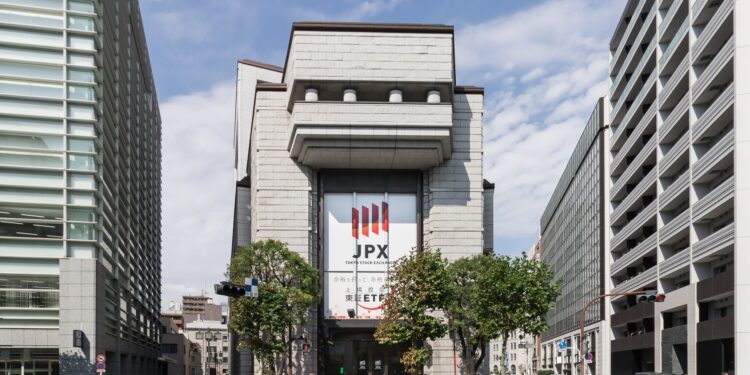Asian shares mostly rose after U.S. stocks closed broadly higher with gains in Big Tech companies offsetting a skid in oil-and-gas stocks
Asian shares mostly rose Tuesday after U.S. stocks closed broadly higher with gains in Big Tech companies offsetting a skid in oil-and-gas stocks.
Japan’s benchmark Nikkei 225 added 0.8% to finish at 38,903.68. Australia’s S&P/ASX 200 gained 0.3% to 8,249.20. South Korea’s Kospi added 0.2% to 2,617.80. Hong Kong’s Hang Seng edged up 0.2% to 20,648.51, while the Shanghai Composite slipped 1.1% to 3,286.41.
In Japan, the government reported that unemployment stood at 2.4% last month, marking an improvement of 0.1 percentage points, and the second straight month of recovery. The continuing weak yen is helping hold up Japanese stocks. In currency trading, the U.S. dollar slipped to 153.06 Japanese yen from 153.23 yen. The euro cost $1.0813, inching down from $1.0817.
On Wall Street, the S&P 500 rose 0.3%. The main measure of the U.S. stock market was coming off its first losing week in the last seven, but it’s still near its all-time high set earlier this month.
The Dow Jones Industrial Average rose 0.6%, while the Nasdaq composite finished 0.3% higher. It’s now within 0.4% of its all-time high set in July.
Several Big Tech stocks, including Apple and Meta Platforms, helped lead the way. Five of the behemoths known as the “Magnificent Seven” are on this week’s schedule to report their latest profits. These high-flying stocks have been at the forefront of Wall Street for years and have grown so big that their movements can singlehandedly shift the S&P 500.
After suffering a summertime swoon on worries that their stock prices had risen too quickly when compared with their profits, Alphabet, Meta Platforms, Microsoft, Apple and Amazon are under pressure to deliver more big growth.
But stocks in the oil-and-gas industry dropped, hurt by the sinking price of oil. Exxon Mobil fell 0.5% and ConocoPhillips fell 1.2%.
In energy trading in Asia Tuesday, benchmark U.S. crude fell 18 cents to $67.20 a barrel. Brent crude, the international standard, declined 16 cents to $71.26 a barrel.
On Monday, a barrel of benchmark U.S. crude fell 6.1%, and Brent crude slid 6.1%. That was the first trading for them since Israel attacked Iranian military targets on Saturday, in retaliation for an earlier barrage of ballistic missiles. Israel’s attack was more restrained than some investors had feared it could be, and it raised hopes that a worst-case scenario may be avoided.
Beyond the violence that is taking a human toll, the worry in financial markets is that an escalating war in the Middle East could cut off the flow of crude from Iran, which is a major oil producer. Such worries had sent the price of Brent crude up to nearly $81 per barrel in early October, despite signals that plenty of oil is available for the global economy. It’s since fallen back below $72.
Financial markets are also dealing with the volatility that typically surrounds a U.S. presidential election, with Election Day one week away. Markets have historically been shaky heading into an election, only to calm afterward regardless of which party wins.
The trend affects both the stock and the bond markets. In the bond market, Treasury yields were ticking higher to tack more gains onto their sharp rise for the month so far.
The yield on the 10-year Treasury rose to 4.28% from 4.24% late Friday. That’s well above the roughly 3.70% level where it was near the start of October.
Yields have climbed as report after report has shown the U.S. economy remains stronger than expected. That’s good news for Wall Street, because it bolsters hopes the economy can escape from the worst inflation in generations without the painful recession that many had worried was inevitable.
But it’s also forcing traders to ratchet back forecasts for how deeply the Federal Reserve will cut interest rates, now that it’s just as focused on keeping the economy humming as getting inflation lower. With bets diminishing on how much the Fed will ultimately cut rates, Treasury yields have also been given back some of their earlier declines.
That means the U.S. jobs report on the schedule for Friday could end up being the market’s main event, even bigger than the Big Tech profit reports. Investors want to see more evidence of solid hiring to keep alive the perfect-landing hopes for the economy.
All told, the S&P 500 rose 15.40 points to 5,823.52. The Dow added 273.17 points to close at 42,387.57. The Nasdaq rose 48.58 points to 18,567.19.
Source: abcNEWS


Recent Comments